5 Essentials When Offering Hospitality Cleaning Services
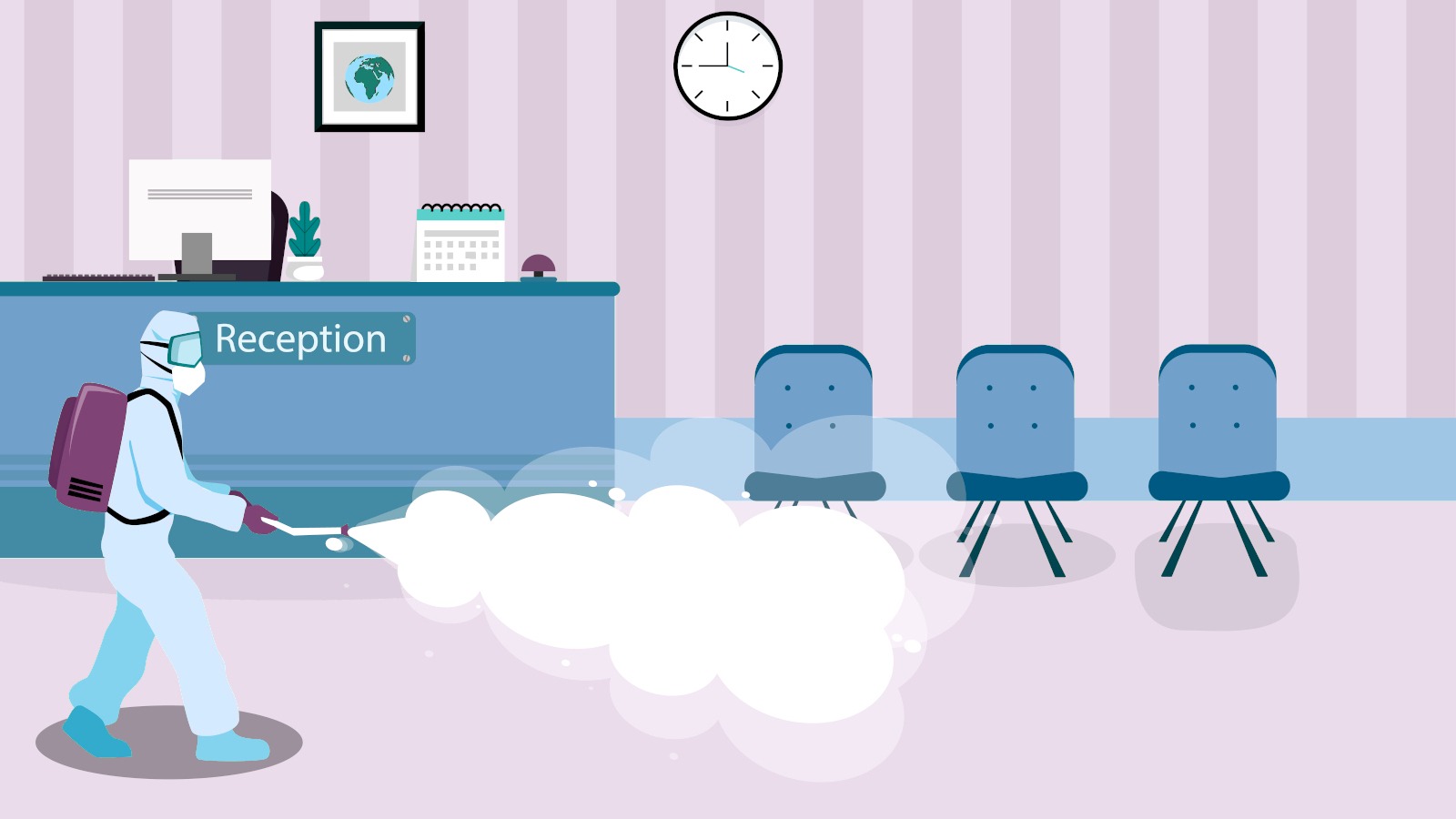
Looking to Add Hospitality Cleaning Services to Your Commercial Cleaning Company?
Great! It can be a profitable cleaning niche.
Hospitality chains around the world are seriously considering what the future of travel looks like, and developing measures to address worries as they move ahead following COVID-19 (Like foggers, electro-static disinfectant, ozone air purifiers, and germicidal UV light technology).
We’ve collected some top-of-mind, must-know facts about how to clean spaces within the hospitality industry.
Last week we put out a guide for cleaning companies tackling cleaning for medical facilities, and the nuances of re-opening in that particular sector. This week we’ve gathered what we consider the essential must-know-facts from one of the single most demanding industries on janitorial companies…
5 Essentials for Offering Hospitality Cleaning Services:
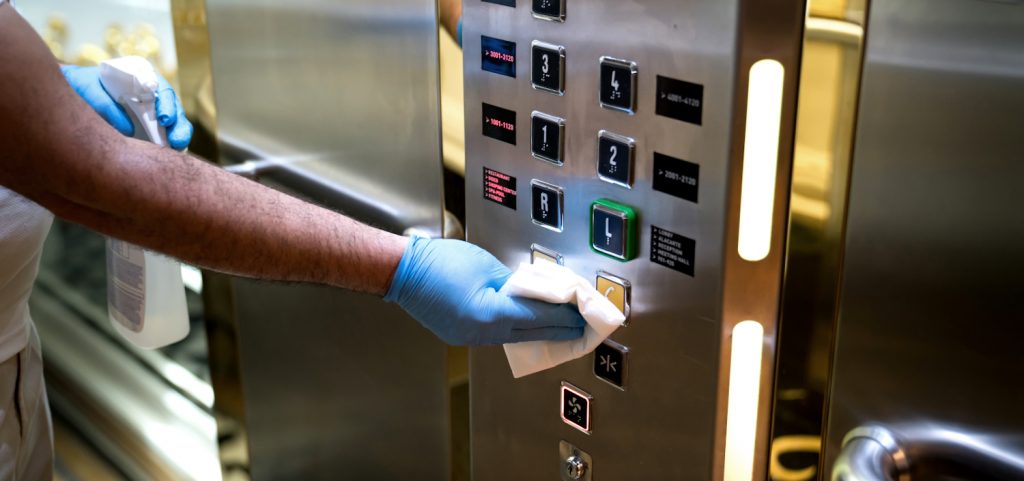
Hospitality Cleaning Services Essentials #1- The Difference Between Disinfecting Sanitizing and Cleaning
You’ve successfully cleaned? Great, but you’re just getting started.
Proper cleaning and disinfection for hospitality rooms at hotels, motels, and similar facilities is critical to stop the spread of COVID-19. A great start for any commercial cleaning company owners is to make sure cleaning staff and clients know the difference between cleaning, sanitizing and disinfecting. This will be paramount to doing their jobs effectively. Following standard cleaning and disinfecting procedures can help prevent the spread of viruses like COVID.

Hospitality Cleaning Services Essentials #2 - Know Your High Touch Points
Proper cleaning and disinfection for rooms at hotels, motels, and similar facilities is critical to stop the spread of COVID-19. A great start for any commercial cleaning company owners is to make sure cleaning staff and clients know the difference between cleaning, sanitizing and disinfecting. This will be paramount to doing their jobs effectively. Following standard cleaning and disinfecting procedures can help prevent the spread of viruses like COVID.
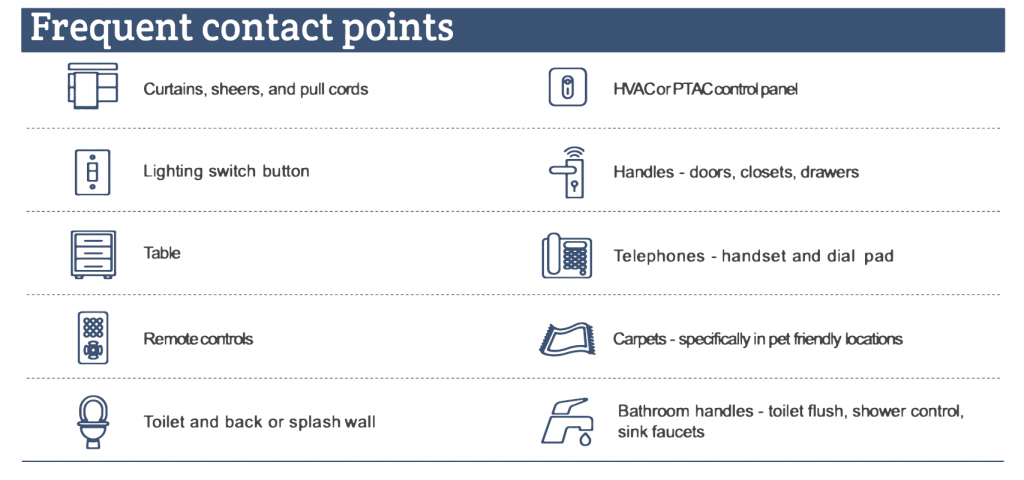
Hospitality Cleaning Services Essentials #3 - PPE (Personal Protective Equipment) is Paramount
COVID-19 primarily spreads from person to person when in close contact (approximately 6 feet). Spread is believed to be from respiratory droplets and aerosols produced by an infected person. The virus could potentially also spread if a person touches a surface or object that has the virus on it and then touches their own mouth, nose, or eyes.

Hospitality Cleaning Services Essentials #4 - How can cleaning staff safely perform their job?
While the risk of exposure to cleaning staff is low, it is still suggested that your cleaning staff wear Personal Protective Equipment (PPE). They should be wearing disposable gloves and gowns for all tasks in the cleaning process, including handling trash.
Wash hands after handling dirty laundry.
Gloves should be removed after cleaning a room or area occupied by sick people. Wash hands immediately after gloves are removed.
Remove PPE Properly PPE must be properly removed to reduce the risk of self-contamination. Of course, the unexpected can happen, and if it does, cleaning staff should immediately report breaches in PPE or any other potential exposure to their supervisor.
Additional PPE might be required based on the cleaning/disinfectant products being used and whether there is a risk of splash.
Hospitality Cleaning Services Essentials #5 - Leave No Task Unchecked
COVID-19 It is important to know, not only what tasks need to be completed in what order and by whom, but ALSO hoe frequently to conduct cleaning. The frequency of your servicing of areas should be reflective of the kind of foot traffic and exposure to the public these areas get. Sadly there is no one size fits all advice here, so we recommend making yourself a handy checklist like the one below and follow it closely!
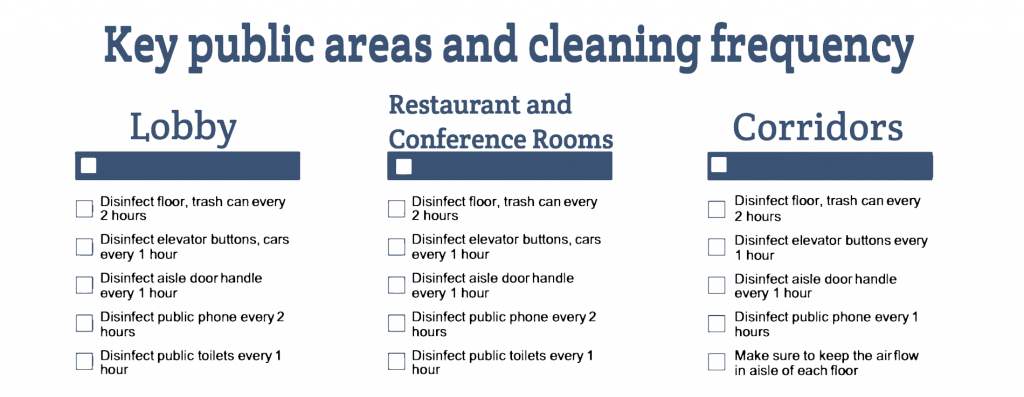
Hospitality Cleaning Services Essentials #6 - Hope for the Best, but Prepare for the Worst
Even though it is unknown how long the air inside a room occupied by someone with confirmed COVID-19 remains potentially infectious, there are some generally good precautions to take when cleaning these areas.
Facilities will need to consider factors such as the size of the room and the ventilation system design when determining how long to close off rooms or areas used by sick people before beginning a disinfection.
To minimize your risk, take the following precautions if a sick person has recently occupied any given space:
-
Close off communal areas visited by the sick people.
-
Open outside doors and windows and use ventilating fans to increase air circulation in the area.
-
Wait 24 hours or as long as practical before beginning cleaning and disinfection.
-
Clean and disinfect all areas used by the person who is sick, such as offices, bathrooms, common areas, shared electronic equipment like tablets, touch screens, keyboards, remote controls, and ATM machines.
-
Vacuum the space if needed. Use a vacuum equipped with a high-efficiency particular air (HEPA) filter, if available.
-
Refer to CDC Guidelines for more detailed instructions for people in isolation.
Hospitality Cleaning Services Essentials #7- The EPA (Environmental Protection Agency)
We can’t stress enough the importance of following the recommendations of the DCD and the EPA during these difficult times. The EPA, has a list of registered sanitizers labeled for use against the novel coronavirus.
Note: There may be additional disinfectants that meet the criteria, and EPA will update the list as needed.
-
Recommend use of EPA-registered household disinfectant.
-
Follow the instructions on the label to ensure safe and effective use of the product.
Many products recommend:
-
Keeping surface wet for some time (see product label).
-
Precautions such as wearing gloves and making sure you have good ventilation during use of the product.
-
Always closely follow the directions on a label to ensure safe and effective use.
-
Wear skin protection and consider eye protection for potential splash hazards
-
Ensure adequate ventilation
-
Use no more than the amount recommended on the label
-
Use water at room temperature for dilution (unless stated otherwise on the label)
-
Avoid mixing chemical products
-
Label diluted cleaning solutions
-
Store and use chemicals out of the reach of children and pets
See EPA’s (Environmental Protection Agency) 6 steps for Safe and Effective Disinfectant Use
And Remember…
Regular cleaning staff can clean and disinfect community spaces.
Ensure they are trained on appropriate use of cleaning and disinfection chemicals.
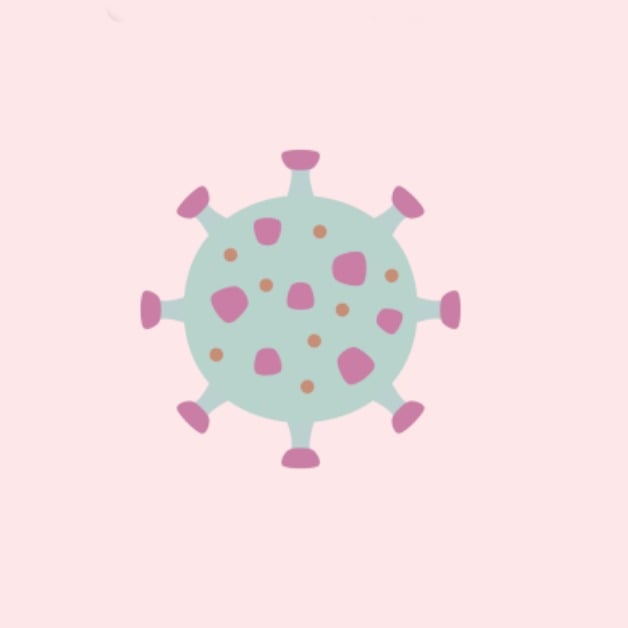
- Wear disposable gloves and gowns for all tasks in the cleaning process, including handling trash
- Always wash immediately after removing gloves and after contact with a person who is sick.
- Hand sanitizer: If soap and water are not available and hands are not visibly dirty, an alcohol-based hand sanitizer that contains at least 60% alcohol may be used.
We hope you’ve found this to be a useful guide.
It is a time where it may be difficult to separate fact from fiction, but we all need to be dedicated, diligent, and believe that things will be changing in a positive direction soon.
In reaction to the global issue, the expected levels of sanitation have been raised across the board for years to come. The best move is to put long-term plans into place to make these practices your “new normal”. Again, the Swept team will be here throughout this journey to support you. We have your back!


